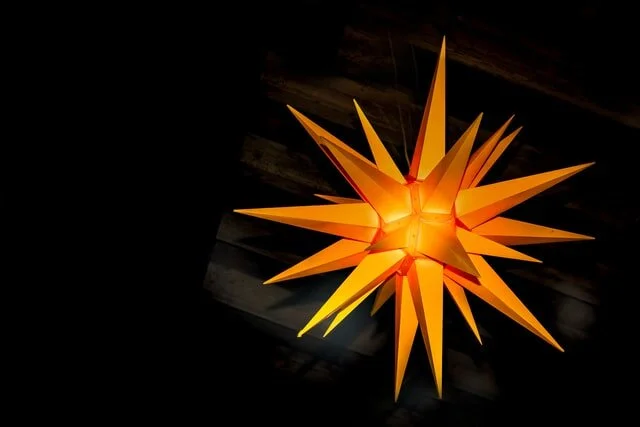Episode 14 - A Star's History Lesson
Oh, my goodness, y’all…it has been a hot minute since I have recorded my voice for a podcast episode - but a new episode is out today. I truly had every intention and plan and amazing list of episodes all planned out to begin the first part of January, shortly after a small celebration for The Rocket Scientists retirement.
And then Rona came knocking on our door. Now, I have a whole episode just on both of us getting sick, but that is for another time. Needless to say, while we both only had what are considered mild cases that started on January 8th for him and January 14th for me – those mild cases drop-kicked us both and we are still recovering. I would say it is a 2-steps forward, 1-step back kind of dance. While he had a tougher time of it, I still have many lingering symptoms including entering my 7th week with no taste or smell (and if you think that has stopped me from having my daily, beautiful cup of coffee, you would be thinking wrongly). So, here is my one-line TED Talk…WEAR A MASK! This thing is no joke, and we are so very close to seeing a more normal way of living once again, this is no time to loosen the grip on mitigation!
I have actually been holding on this this episode for a long while. I mean…a long while. Like, before I started the podcast. It started with looking at these amazing tin Moravian stars hanging in one of the décor shops close by. (Side note: one of the great benefits of living so close to the Mexico border is that we have amazing businesses owned by local families who import incredible artisan goods.) As I was sitting at home later that night, I started wondering what the story behind Moravian Stars was? So, I dove into some research and I fell even more in love with these pieces of beauty. Spoiler Alert – they are not from Mexico!
So, let me say that what my research discovered was of course more information on the stars themselves, but more than that it was a beautiful history of the Moravian Revival and a lesson on peace, conflict resolution, prayer and community that I think about almost weekly. To me the creativity of these people, to bring about unified community that still continues to this day, is breathtaking and admirable. Of course, they are human and so there is certainly some areas that might be called into question, as there are with all of us. Still, I simply stand in awe of this refugee church and the work they stepped into. In the church world this little revival touched the entire world as lives of famous preachers, song writers and theologians were shaped through the prayers and evangelism of the Moravians.
According to Wikipedia, The Moravian Church, or the Moravian Brethren, is one of the oldest Protestant denominations in the world, dating back to the Bohemian Reformation of the 15th century in the Kingdom of Bohemia. The name by which the denomination is commonly known comes from the original exiles who fled to Saxony in 1722, from Moravia to escape religious persecution. The modern-day denomination, Unitas Fratrum, has about one million members worldwide, and continues to draw on traditions established during the 18th century. They place high value on denominational collaboration, personal humility, missions, and music.
Now, while I love the academic account of the history – it is the story of the Moravian Revival that strikes the chords in my heart and has really pushed me to lean into establishing spiritual rhythms, especially in prayer, over the last 6 months since I started researching this church.
The refugee Moravian colony from Bohemia, settled on the estates of Count Nicholas Zinzendorf in Herrnhut, Germany, where a powerful revival began in 1727. It launched 100 years of continuous prayer and within 25 years 100 Moravians were missionaries, more than the rest of the Protestant church had sent out in two centuries.
A Moravian historian wrote about what occurred as the church experience an outpouring of the Holy Spirit on the 13th of August 1727, “We saw the hand of God and His wonders. From that time scarcely a day passed but what we beheld His almighty workings amongst us. A great hunger after the Word of God took possession of us so that we had to have three services every day, 5:00am and 7.30 a.m. and 9:00p.m. Everyone desired above everything else that the Holy Spirit might have full control. Self-love and self-will, as well as all disobedience disappeared, and an overwhelming flood of grace swept us all out into the great ocean of Divine Love.”
Count Zinzendorf, a young nobleman in Herrnhut, offered his estate and the ground surrounding, to the Moravians and soon became their young leader. He was consumed with bringing about connection, community and harmony between denominations that had allowed arguments over different theology to drive a wedge of disunity between the churches. Sound familiar? Today we can say that is happening in more than churches – our country, our world, is filled with disunity.
Zinzendorf visited all the adult members of the deeply divided community. He drew up a covenant calling upon them 'to seek out and emphasize the points in which they agreed' rather than stressing their differences. On 12 May 1727, they all signed an agreement to dedicate their lives, as he dedicated his, to the service of the Lord Jesus Christ.
The timeline to this revival and then what would begin 100+ years of 24/7 prayer looks something like this:
· On 16 July, many of the community began to meet together on their own to pour out their hearts in prayer and hymns.
· On 5 August, the Count spent the whole night in prayer with about 12 others following a large meeting for prayer at midnight.
· On Sunday, 10 August, during a service was overcome by the conviction of God. They continued till midnight in prayer and singing, weeping and praying.
· On Wednesday, 13 August, the Holy Spirit was poured out on them all. Their prayers were answered in ways far beyond anyone's expectations. Many of them decided to set aside certain times for continued earnest prayer.
· On 26 August, 24 men and 24 women committed to continue praying in intervals of one hour each, day and night.
· On 27 August, this 24/7 prayer movement began. Others joined and the number involved increased to 77. They all carefully observed the hour which had been appointed for them. They had a weekly meeting where prayer needs were given to them.
That astonishing prayer meeting beginning in 1727 went on for one hundred years. It was unique. Known as the Hourly Intercession, it involved relays of men and women in prayer without ceasing. That prayer also led to action, especially evangelism. More than one hundred missionaries left that village community in the next 25 years, all constantly supported in prayer.
Even as we sit here in 2021 there is still a 24-7 Prayer movement that was cofounded by pastor and writer, Pete Greig in England. If this rag-tag community of Christ-following refugees could change their world with creative, around the clock prayers and commitment to unity and humility, how much more should we be able to do to bring about change in our communities? I don’t know about you, but I want to try to endeavor to be creative in these areas, too.
“But what about the stars, Stacy?” You might be asking. After all, that is what sparked this research in the first place, right. Well, the first Moravian star is known to have originated in the 1830s at the Moravian Boys' School in Niesky, Germany, probably as a geometry lesson or project. Around 1880, Peter Verbeek, an alumnus of the school, began making the stars and their instructions available for sale through his bookstore. His son Harry went on to start the Herrnhut Star Factory, which was the main source of stars until World War I. Although heavily damaged at the end of World War II, the Star Factory resumed manufacturing them. Briefly taken over by the East Germany government in the 1950s, the factory was returned to the Moravian Church-owned Abraham Dürninger Company, which continues to make the stars in Herrnhut.
While the original geometry lesson star had 110 points, most stars made now have 26. While Moravian stars are used in Christmas decorations and to walk through Advent, you can find them used in many churches wherever Moravian missionaries have been sent. Here in the US the city of Winston-Salem, North Carolina, which has Moravian origins dating to 1766, uses the Moravian star as their official Christmas street decoration. In addition, a 31-foot Moravian star, one of the largest in the world, sits atop the North Tower of Wake Forest Baptist Medical Center during the Advent and Christmas seasons. Another star sits under Wake Forest University's Wait Chapel during the Advent and Christmas seasons as well.
Ok, I will admit, clearly this was a weird and abnormal episode. Or was it? It speaks to the beauty of the creative ways we can step into being a part of unifying our circles of influence. More than that, it speaks to how we can step out of ourselves and commit to live selflessly…to recognize we are nothing without each other.
Thanks for indulging my tangent that all started with a beautiful star.
I promise to get back to more consistent episode releases. If you haven’t subscribed to the email newsletter, A Seat at The Table, you can do so at the bottom of this page, and my guess is you might be blessed in a creative way!
Until next time, go out and find a creative way to make someone smile!
Photo by Sebastian Fröhlich on Unsplash




